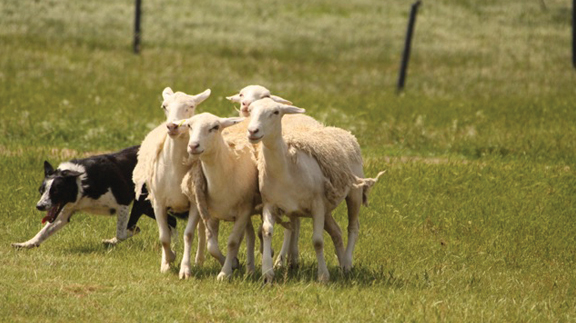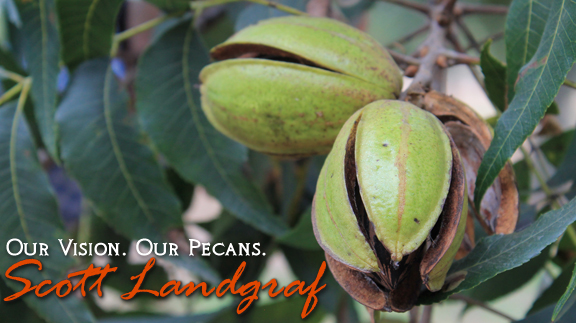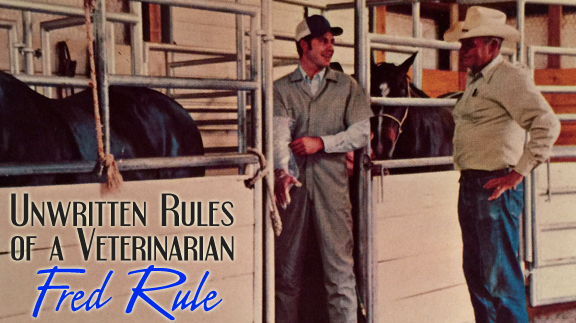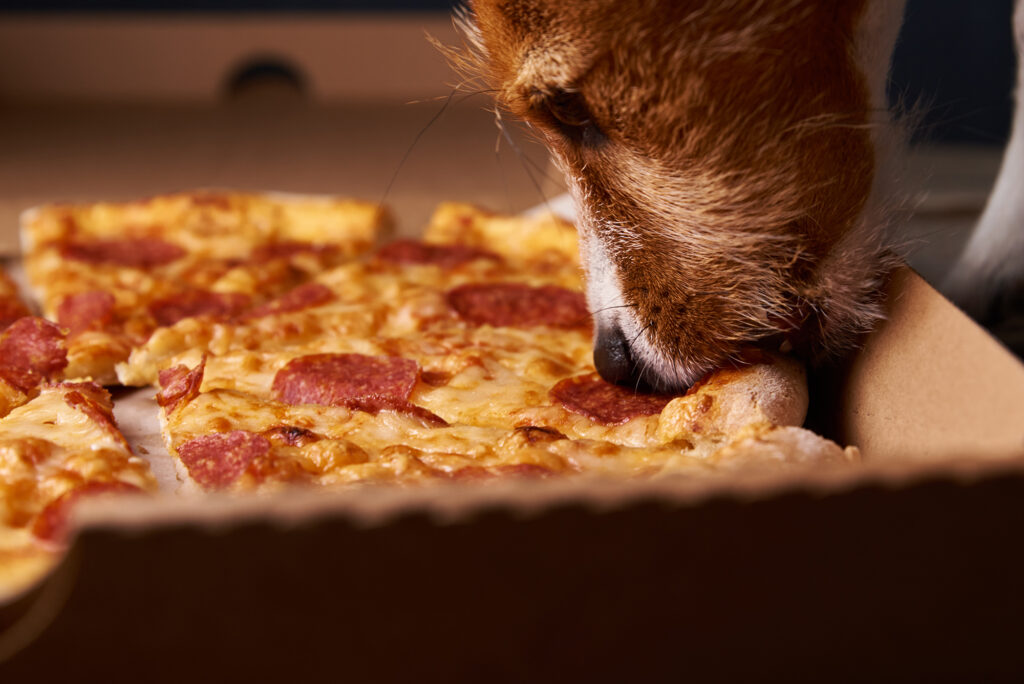Country Lifestyle
March 2018 Profile: Kenneth Hodge
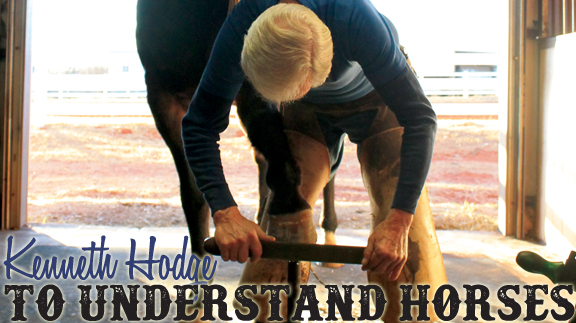
To Understand Horses
By Laci Jones
Kenneth Hodge brushes his 21-year-old brown quarter horse named “Huey” in his barn in Elk City, Okla. With passion and a hint of laughter in his voice, he said, “The only thing I’ve been able to count on is my horse.”
Known by many as “Hodge,” the Oklahoma native has worked in the horse industry for more than 40 years as a horse farrier and trainer. When asked how he’s been able to continue working in a physically demanding position for more than four decades, Hodge said his body was built for shoeing horses.
“My size is a benefit to shoeing because I’m not big,” Hodge explained. “I’m the right size, my body is built to be sound, and I’m just lucky.”
Born in November 1946, Hodge was given a 50 percent chance to live because he was born pre-mature. Despite the challenges he faced early in life, the small boy had an ideal country-boy childhood in the small town of Willow, Okla. One of his first jobs was chopping cotton as a kid.
“We would go out and chop cotton and get 75 cents an hour,” he added. “I started pulling bolls at six-years-old and that’s how I bought my school clothes. I would spend eight hours chopping cotton, earning $6 a day.”
His mother was given a Monarch piano by her father when she was 16 years old in 1929. That piano was used by Hodge’s father, who made a living playing the piano by recording records and giving music lessons.
“He taught so many kids to play,” he explained. “Some of the guys who would lead sing in the church, would get my dad to help them with their music.”
One of four children, Hodge learned to play the piano. He said he enjoyed Elvis Presley’s southern gospel music as well as Dixieland jazz and blues. His father thought the young piano player had enough talent to make a career performing, but his mother did not want him to pursue a career in the music industry because of the amount of traveling.
However, she did not want him to pursue a career in the horse industry either. His interest in horses began as a child when he started riding his neighbor’s horses.
His passion for horses did not extend to his parents or siblings, but Hodge had a knack for working with horses. He said many of the “old-timers” taught the young cowboy about horses. Hodge started getting paid to break a Shetland pony at 12 years old.
“My teachers thought I was an outlaw because I worked with horses,” Hodge said.
A couple years later he was training larger horses. Between working with horses and chopping cotton, the Willow, Okla., native earned $44 a week. Hodge saved his money and purchased his first horse in 1961 at 14 years old with an $85 bank loan.
“I rode him for eight months and sold him for $175,” the horse trainer explained. “That was a lot of money back then.”
The same year, Hodge learned how to trim the horse’s feet that he was riding and training. An older gentleman by the name of George Wootton showed him how to trim and clean feet.
“My neighbors would have me trim their horse’s feet,” he added. “Sometimes they would pay me, and sometimes they would just thank me.”
Hodge graduated from Granite High School in 1965. He didn’t have the money to go to college, but he said he didn’t have the desire to attend college. He decided to enlist in the U.S. Armed Forces, but a physical showed the recent graduate had a heart murmur. However, he was able to join the U.S. National Guard in 1965. Hodge remained stateside during his service, and was discharged in 1972. After he was discharged, a man from California advised Hodge to learn how to shoe horses.
“He said, ‘Boy, you need to learn how to shoe horses. You have got a good eye and you understand this,’” Hodge recalled. “He showed me how to nail a shoe on.”
The farrier started shoeing horses for friends and neighbors. He got 50 cents a head for trimming and $2 for shoeing in 1972. Three months later, he started charging $2 for trimming and $6 for a re-set and $8 for shoeing.
“I could trim four an hour, so that is $8,” he explained. “I could shoe one in an hour, so that is $8. Manual labor then was $2.”
Hodge also ran race horses in Oklahoma, Texas, Kansas and New Mexico from 1974 to 2004. He started training race horses when he was 25 years old at a racetrack in Sayre, Okla. He trained horses in the morning and shod horses all afternoon.
Two years later, he learned the anatomy of a horse’s foot from a local veterinarian. Learning how to balance a foot, Hodge become the farrier he is today.
“One lady called and asked if I was a ‘corrective shoer,’ and I said, ‘No, I’m a correct shoer,’” he recalled.
Hodge said many farriers do tricks where it looks good, but the foot is not balanced. The horse farrier said it is imperative to have the horse hit the ground flat by balancing the shoe around the structure inside the foot.
“To do that the correct way, you have to have an imaginary 3-D X-Ray vision,” he added. “You have to know where the structure is at inside that foot and it has to be balanced on the inside of that foot.”
While he wants a horse’s foot to look good, Hodge’s No. 1 priority is making sure the horse is supported.
“Each foot is taking care of a quarter of that horse,” Hodge explained. “If it’s hitting the ground wrong, it is hurting every joint and all the way up.”
Hodge shoes horses by their conformation, then changes the shoes for the different events such as racing or cutting.
“A baseball player or football player wears cleats, like a racehorse, where they are trying to get the toe grip,” he explained. “A basketball player wears a rubber soled tennis shoe because that rubber will get a hold of that floor. That is what we need to do with that horse. It’s really technical, but it is really simple.”
The horse farrier has worked with Walter Merrick for 30 years, Roy Cooper, Fred Rule, DVM, for more than 40 years among many others. Hodge has shod horses for five generations of Beutlers. Bennie Beutler, owner of Beutler Brothers Rodeo Company in Elk City, Okla., has known Hodge for his entire life.
“He’s probably the best horseshoer I have ever seen,” Bennie Beutler added. “Several years ago, people would fly him to Kentucky to shoe horses that were running those big races at Churchill Downs Racetrack and fly him back. That is how good he is.”
David George of Crowder, Okla., has known Hodge for more than three decades. The horse farrier would travel more than 400 miles to shoe his horses. George said he appreciated all his efforts as a horse farrier and as a friend.
“He is as good [of a farrier] that I know of,” George explained. “It’s amazing because we would have a horse that wasn’t quite right, and he would say, ‘I’m going to do this, and that horse is going to do so-and-so.’ When he would get through shoeing, that horse did what he said he was going to do.”
Hodge said the support of his friends helped him become successful in the industry.
“I have the best friends in the world that I respect. I’ve been lucky to meet all these guys because they believed in me,” he added.
Read the March issue to learn more!
Country Lifestyle
Riding for the Brand
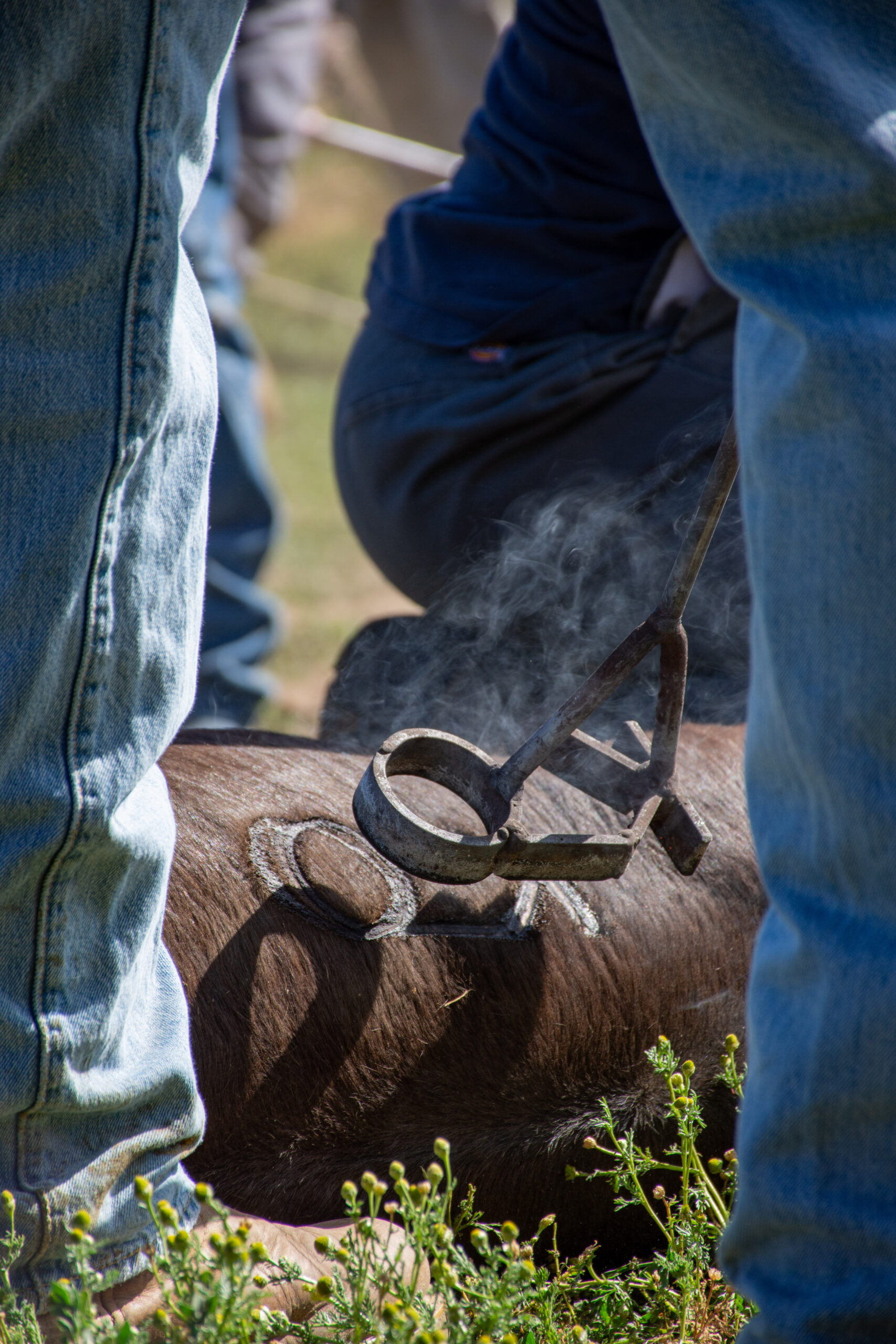
By: Christopher Dysinger
According to the Code of the West a man who has integrity is one who rides for the brand. If you are unfamiliar with cowboy parlance this phrase is used to describe being loyal to the outfit you work for. Cowboys were, “intensely loyal to the outfit they were working for and would fight to the death for it. They would follow their wagon boss through hell and never complain.” -Teddy Blue Abbot. Riding for the brand means being loyal and when I consider what it means to be loyal I am reminded of the words of the Lord Jesus to His disciples in Matthew 16:24, “Then said Jesus unto His disciples, If any man will come after Me, let him deny himself, and take up his cross and follow Me.” To me, to take up the cross and follow the Lord is the epitome of what it means to ride for the brand.
When you place your trust in the Lord Jesus you are signing on to His outfit, to speak the language of the West. When you called upon the name of the Lord Jesus by faith, He saved you and from this point you are riding for His brand. In taking up your cross and following Him you have pledged to be loyal, and this means you face any hardship or trial like a cowboy on the trail moving the herd. Any complaint must be swallowed in the same way you would swallow a cup of coffee. When I hear our faith and loyalty to the Lord Jesus put into these terms it stirs something within me that moves me to keep right on riding for the brand.
Louis L’amour wrote, “Riding for the brand was an expression of loyalty to a man’s employer or the particular outfit he rode for. It was considered a compliment of the highest order in an almost feudal society. If a man didn’t like a ranch or the way they conducted their affairs he was free to quit, and many did; but if he stayed, he gave loyalty and expected it. A man was rarely judged by his past only by his actions. Many a man who came west left things behind him he would rather forget, so it was not the custom to ask questions. Much was forgiven if a man had courage and integrity and if he did his job. If a man gave less than his best, somebody always had to pick up the slack, and he was not admired.” It is the same when a person gives his or her heart to Jesus.
When you come to the Lord Jesus you are not judged by your past. When you come to the Lord Jesus, repenting of sin and seeking forgiveness, everything from your past is left behind. All will be forgiven. 1 John 1:9 reads, “If we confess our sins, He is faithful and just to forgive us our sins, and to cleanse us from all unrighteousness.” When you place your faith in the Lord Jesus you are promising to be loyal and in return you will receive the same. He has promised that He will never leave us or forsake us. When you walk with the Lord Jesus through life you are indeed, “riding for the brand.”
“Riding for the brand” is not just an expression of loyalty nor is it just an expression of pride, it is also an expression of love. When a cowboy claims to be riding for the brand, he is telling any other outfit who may seek his loyalty, that he cannot give it, because he has given his word to another. It is the same when we pledge our faith and loyalty to the Lord Jesus. If any would call us away from Christ we cannot go, because we are riding for the brand.
The End
This article is an excerpt from the book, The Bible and the Code of the West by Dr. Christopher Dysinger.
Country Lifestyle
Farm Dogs & Table Scraps
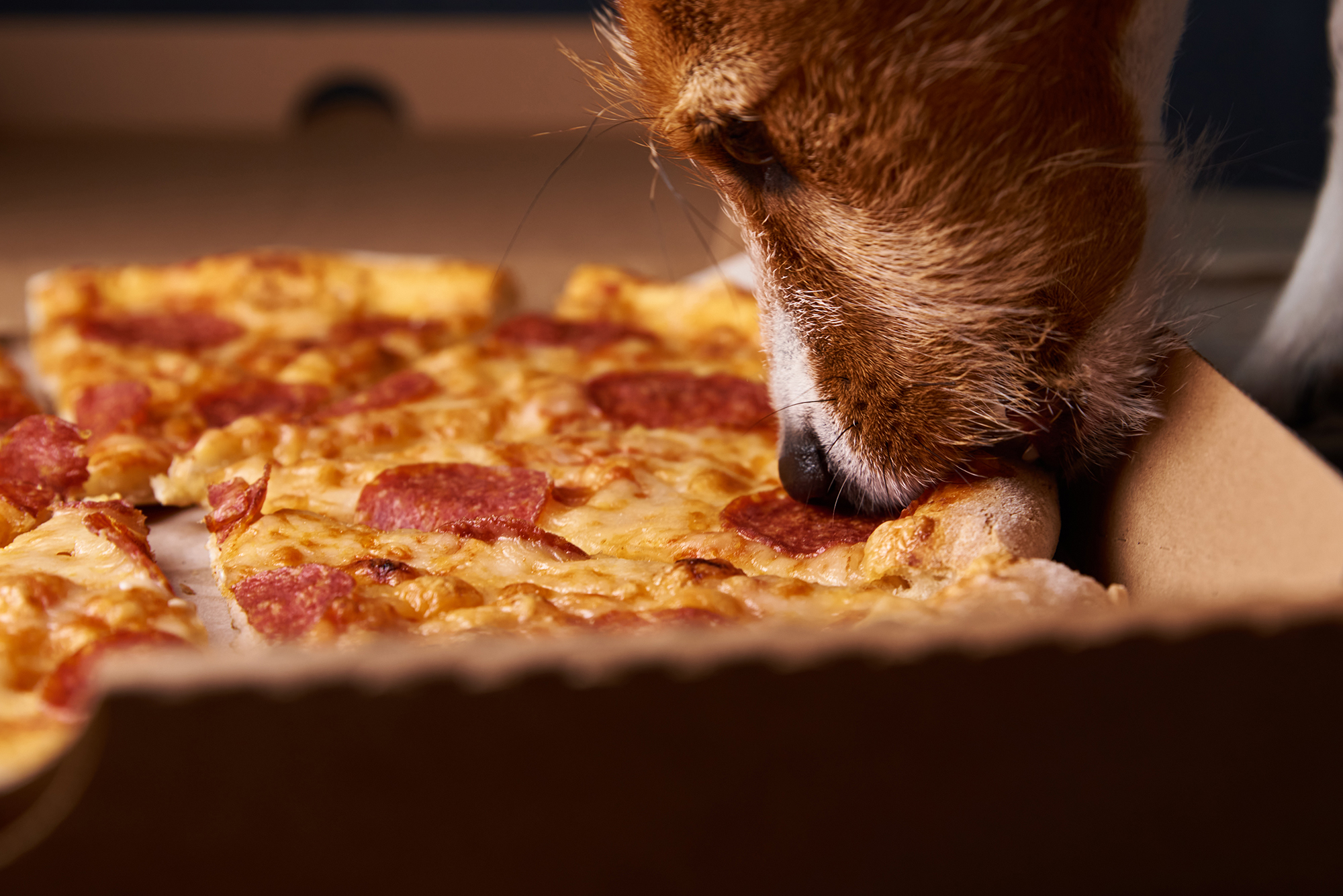
What’s Safe and What’s Not?
Growing up on a farm, our dogs were tough. They roamed the pastures, slept under the barn, and ate just about anything they could get their paws on—whether we meant for them to or not. I’ll admit, I never thought twice when one of our old cow dogs snatched a biscuit off the table or licked up a spill from the barn floor. I’ve even seen a dog steal a whole rib bone off a plate and trot off like he’d won the lottery. And somehow, they always seemed fine.
But here’s the thing—just because they survived doesn’t mean it was safe. For every farm dog that lucked out, there’s another that wasn’t so fortunate. Some human foods can be downright toxic to dogs, and a little bit of bad luck (or a smaller, more sensitive dog) can turn a harmless snack into an emergency.
Common toxic foods lying around the farmhouse
If you’ve got a farm dog—or any dog, really—you need to be aware of the dangers lurking in everyday foods. Some of the biggest culprits include:
Chocolate – The darker it is, the worse it is. Even a little can cause vomiting, seizures, or worse.
Grapes & Raisins – No one’s exactly sure why, but they can cause kidney failure fast.
Onions & Garlic – In large enough amounts, these can destroy red blood cells, leading to anemia.
Xylitol (Found in Sugar-Free Gum & Candy) – This artificial sweetener can send a dog’s blood sugar crashing and cause liver failure.
Alcohol – Even small amounts can be deadly to dogs, affecting their nervous system much more than it does ours.
Bones from Cooked Meat – While not necessarily toxic, they can splinter and cause serious internal injuries.
Macadamia Nuts – These can lead to weakness, vomiting, and even paralysis in dogs.
What to do if your dog eats something toxic
First, don’t panic—but don’t ignore it either. If you know your dog ate something dangerous, call your vet immediately. They can tell you whether to induce vomiting or if it’s something that requires urgent care. If it’s after hours, contact the ASPCA Animal Poison Control Center (888-426-4435) or the Pet Poison Helpline (855-764-7661).
Prevention is always the best medicine, so keep toxic foods out of reach. That might mean keeping the trash can secured, making sure kids don’t slip the dog a treat under the table, or just being more mindful of what’s left on the counter.
Our farm dogs might have been lucky, but luck isn’t a great strategy when it comes to their health. A little awareness goes a long way in making sure they stay happy, healthy, and ready for the next day’s work.
For more information
ASPCA Animal Poison Control: www.aspca.org/pet-care/animal-poison-control
Pet Poison Helpline: www.petpoisonhelpline.com
Visit www.akc.org/expert-advice/nutrition/foods-your-dog-should-never-eat
Country Lifestyle
Summer Squash and Corn Chowder

By Lacey Vilhauer
Total time: 40 minutes
Servings: 6-7
Ingredients
- 6 slices bacon, cooked and crumbled and 1 1/2 Tbsp rendered bacon fat reserved
- 1 1/2 lbs yellow squash, chopped (about 3 medium)
- 2/3 cup thinly sliced celery
- 1 cup diced onion
- 1 Tbsp flour
- 2 cloves garlic, minced
- 2 3/4 cup milk (I used 1%)
- 5 cups canned or fresh cut corn (from about 6 ears corn), divided
- 1/2 cup heavy cream
- 1 1/2 tsp chopped fresh thyme (or 1/2 tsp dried)
- 3/4 tsp salt, then more to taste
- 1/4 tsp freshly ground black pepper, then more to taste if desired
- 3/4 cup shredded cheddar cheese, for serving
- Chopped green onion for garnish (optional)
Instructions
Heat 4 tsp reserved bacon fat in a large pot over medium-high heat. Add celery and onion and sauté 2 minutes then add the squash.
Saute until tender, about 6 minutes, adding in garlic and flour during last 2 minutes of sauteing. Reduce heat slightly.
Add 1 1/2 cups milk, 2 cups of the corn, thyme, salt and pepper to the sauteed veggies.
To a blender add remaining 3 cups of corn, remaining 1 1/4 cups milk and the cream. Process in blender until nearly smooth (about 30 seconds).
Add pureed mixture to pot and stir to blend. Cook until mixture reaches a light boil.
Serve warm with shredded cheese, crumbled bacon and sliced green onions if desired.
-

 Attractions8 years ago
Attractions8 years ago48 Hours in Atoka Remembered
-

 Country Lifestyle9 months ago
Country Lifestyle9 months agoJuly 2017 Profile: J.W. Hart
-

 Country Lifestyle9 years ago
Country Lifestyle9 years agoThe House a Treasure Built
-

 Country Lifestyle4 years ago
Country Lifestyle4 years agoThe Two Sides of Colten Jesse
-

 Outdoors7 years ago
Outdoors7 years agoGrazing Oklahoma: Honey Locust
-

 Equine8 years ago
Equine8 years agoUmbilical Hernia
-

 Outdoors5 years ago
Outdoors5 years agoPecan Production Information: Online Resources for Growers
-

 Farm & Ranch7 years ago
Farm & Ranch7 years agoHackberry (Celtis spp.)

